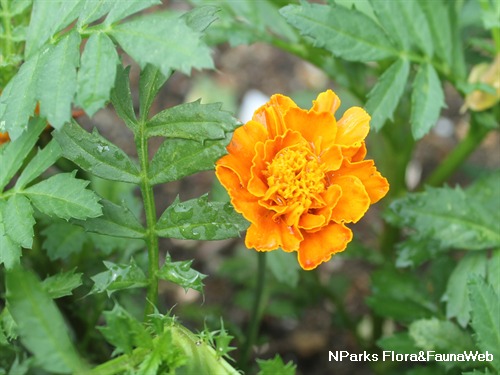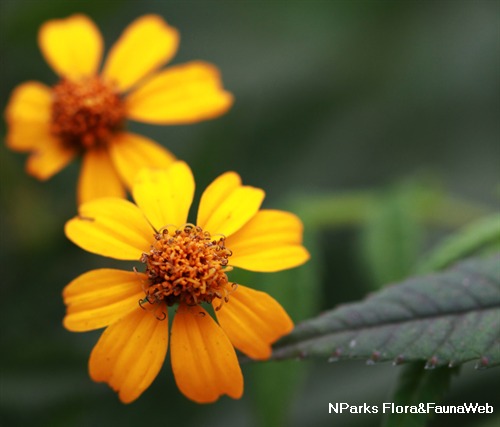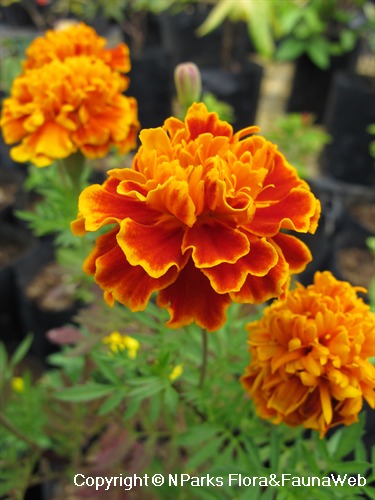
Back
Tagetes erecta
| Family Name: | Asteraceae (Compositae) |
| Common Name: | African Marigold, Aztec Marigold |
Prized for its ornamental flower, the Marigold is significant in both eastern and western cultures. Marigolds symbolise auspiciousness in Hinduism and are worn and displayed in everyday life as well as in ceremonies and festivals such as Deepavali. These flowers come in bright orange, yellow, white and red colours and are woven into flower garlands, often with jasmines and roses.
Name
Classifications and Characteristics
| Plant Division | Angiosperms (Flowering Seed Plants) (Dicotyledon) |
|---|---|
| Plant Growth Form | Shrub |
| Lifespan (in Singapore) | Annual |
| Mode of Nutrition | Autotrophic |
Biogeography
| Native Distribution | Mexico and Central America |
|---|---|
| Native Habitat | Terrestrial |
| Preferred Climate Zone | Tropical |
| Local Conservation Status | Non-native (Spontaneous (Casual)) |
Description and Ethnobotany
| Growth Form | An annual which grows upright with a height of 30 to 150 cm and spreads to about 30 cm across. The leaves and flowers are aromatic when crushed. |
|---|---|
| Foliage | Leaves are dark green and pinnate. Crushed leaves produce a mild fragrance. |
| Cultivation | Prefers moist and well-drained soil although can tolerate clay and dry soils. Tolerant to full sun but appreciate slight afternoon shade. Pinch young plants to promote bushier growth. |
| Etymology | The genus Tagetes is named after Tages, the Etruscan god of the underworld and grandson of Jupiter. The specific epithet erecta means upright, erect, which refers to the growing habit of the plant. |
Landscaping Features
| Desirable Plant Features | Ornamental Flowers |
|---|---|
| Landscape Uses | General, Small Gardens, Flowerbed / Border, Container Planting |
| Thematic Landscaping | Golden Garden |
Fauna, Pollination and Dispersal
| Fauna Pollination Dispersal Associated Fauna | Bird-Attracting (Flowers), Butterfly-Attracting (Flower Nectar) |
|---|---|
| Pollination Method(s) | Biotic (Fauna) |
| Seed or Spore Dispersal | Abiotic |
Plant Care and Propagation
| Light Preference | Full Sun |
|---|---|
| Water Preference | Moderate Water |
| Rootzone Tolerance | Moist Soils, Well-Drained Soils |
| Pruning | Prune the spent flowers as spent flowerheads are heavy and can cause the stems to snap. Pinch younger shoots to promote bushy growth. |
| Potential Problems | Spider mites or thrips. |
| Diseases | Leaf spot and powdery mildew. |
| Pest(s) | Sucking Insects |
| Propagation Method | Seed |
Foliar
| Foliage Retention | Evergreen |
|---|---|
| Mature Foliage Colour(s) | Green |
| Foliar Shape(s) | Non-Palm Foliage |
| Foliar Venation | Pinnate / Net |
Floral (Angiosperm)
| Flower Colour(s) | Yellow / Golden |
|---|---|
| Flower Texture(s) | Smooth |
| Flower Grouping | Cluster / Inflorescence |
| Inflorescence Type | Head / Capitulum |
| Flowering Period | Free-Flowering |
Image Repository
Others
| Master ID | 32944 |
|---|---|
| Species ID | 7358 |
| Flora Disclaimer | The information in this website has been compiled from reliable sources, such as reference works on medicinal plants. It is not a substitute for medical advice or treatment and NParks does not purport to provide any medical advice. Readers should always consult his/her physician before using or consuming a plant for medicinal purposes. |

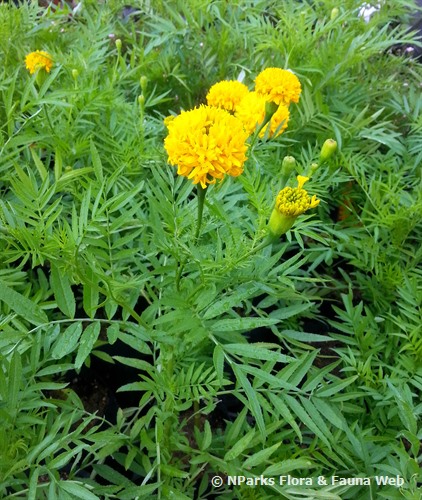
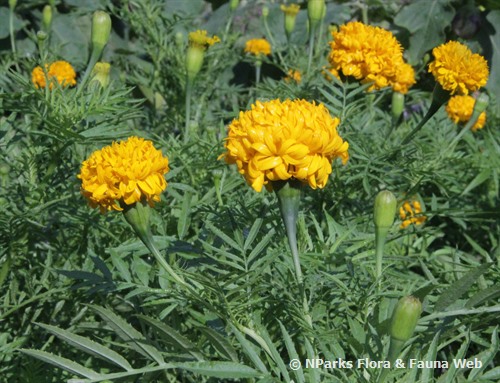
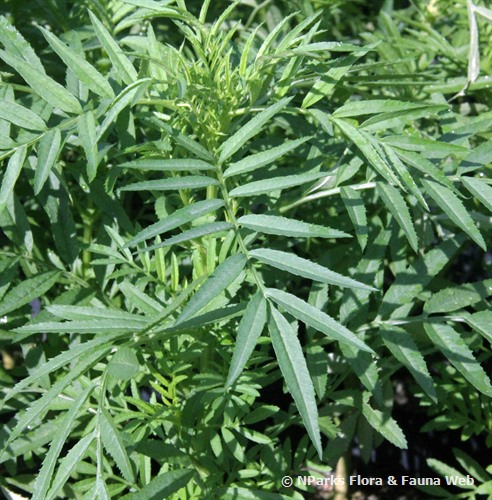
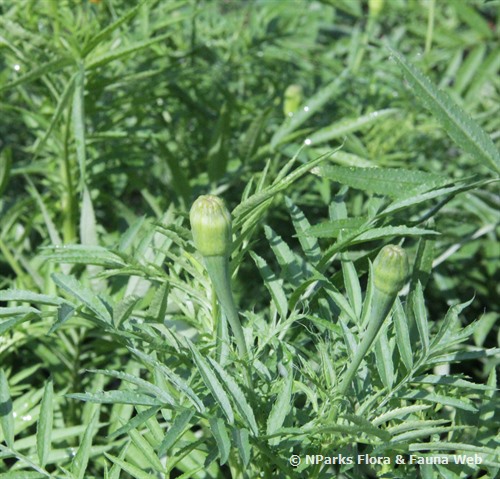
-(1).jpg)
